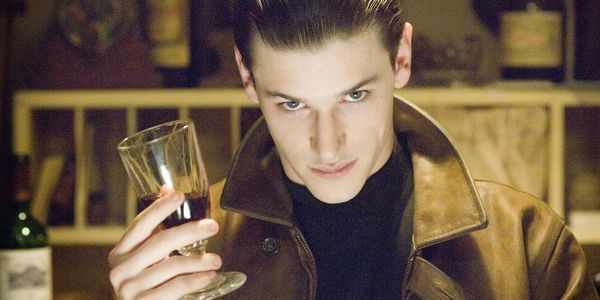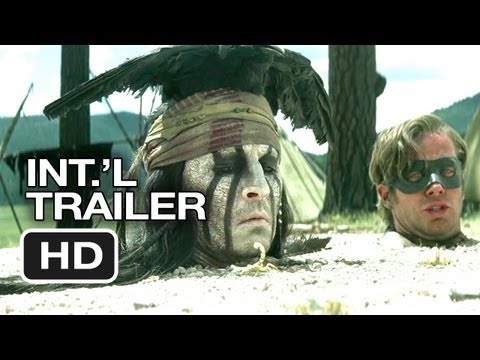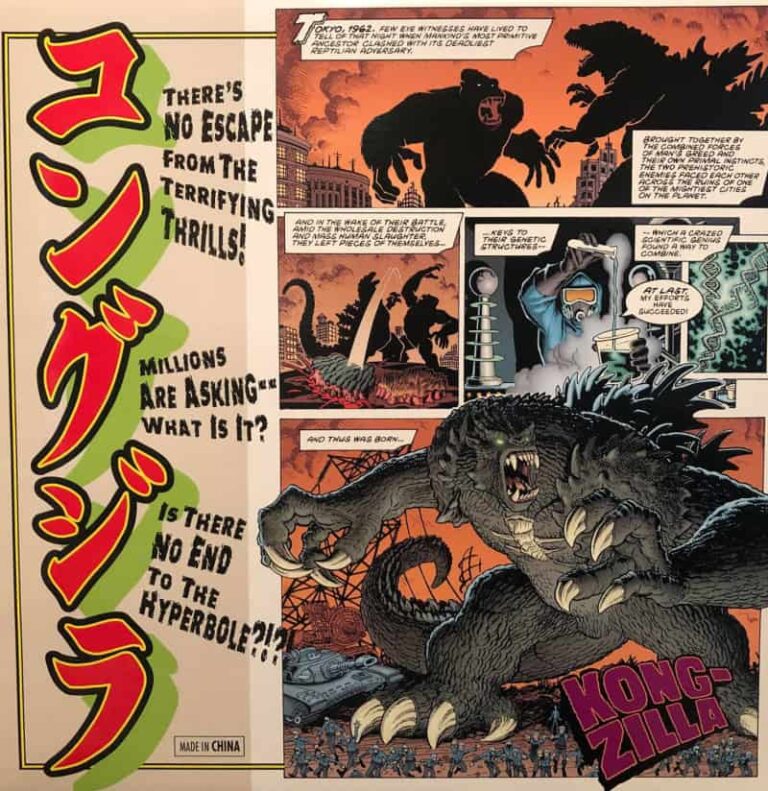Interview with Michael Paul Stephenson, Director of ATTACK OF THE MURDER HORNETS
The murder hornets came. America didn’t listen.
Sure, some media coverage circulated around the arrival of the Asian giant hornet, but in the grips of a pandemic, the story was largely pushed aside. Attention and care and support was not lent to that cause. No one cared. And no one cared to know or appreciate the gravity or the implications of their presence. That is, except for the few “on the front lines.”
Michael Paul Stephenson (of Troll 2 infamy) started out on his latest documentary, Attack of the Murder Hornets, soon after the New York Times published a story about Ted McFall, a Washington state beekeeper whose hive was pillaged by the hornets. 60,000 of his honeybees were not only killed, they were beheaded. McFall had never seen anything like it. In fact, no one in America had. A giant hornet nest was destroyed in British Columbia the year before, but beyond that, the species had no history in North America. But they did now.
Stephenson‘s film chronicles scientist Chris Looney‘s efforts to eradicate the invasive hornets before they’re given the chance to place firm roots in the United States. Working against an ecological clock, Looney and his associates know that there will come a time – sooner rather than later – that the effects and the population of the species will be irreversible. This, to put it plainly, was a crisis on top of another crisis.
With the film’s release on Discovery+, Film Inquiry spoke with Stephenson about his documentary, discussing the urgency of the situation, the unsung heroic nature of science, and his fears working in nonfiction filmmaking.
This interview has been edited for brevity and clarity.
NOTE: The last bits of this conversation contain SPOILERS for Attack of the Murder Hornets. Another warning will precede that discussion.
Luke Parker for Film Inquiry: One of your sources acknowledges early on in the film how weird it is to see any of nature’s creatures as evil, though that’s really the way we all need to think about these murder hornets. For those who may not know, can you explain the urgency of the situation?
Michael Paul Stephenson: On May 2, I believe, The New York Times did a piece about the Asian giant hornet, calling it the “Murder Hornet,” being spotted in America. It was the first time that the species had been seen in the US. Previously, in 2019, there was a nest that was eradicated in British Columbia, but in December of 2019, when Ted’s bees were beheaded, that was the first time we suspected this species was in America.
It’s an invasive species that has and can have a really detrimental impact on the European honeybee, which is the honeybee we have here in our country, and anything that effects the honeybee, especially something as potentially destructive as the giant hornet, is and could be a really big deal to our agriculture. Our honeybee – and this isn’t news or any surprise – is one of these species that’s barely been able to endure. And of the sorts of challenges the honeybee faces, the giant hornet is just one more on top of this species.
If this invasive species were to get established, the impacts that it could have could be a really big deal.
With that sense of urgency in mind, a lot of your subjects approach and talk about this infestation as if they’re going to war. What did you want to do as a filmmaker to translate that energy into the documentary?
Michael Paul Stephenson: So, from the outset, when I read the New York Times article, it felt exactly like that. It felt like there was a war and the folks that are on the front lines are up against all odds. It felt like an impossible hunt. It felt really improbable. I mean, when you think about having to trap one, hopefully, and then having to track it back to its nest, and then hopefully getting rid of the nest, it seems like impossible or near impossible odds.
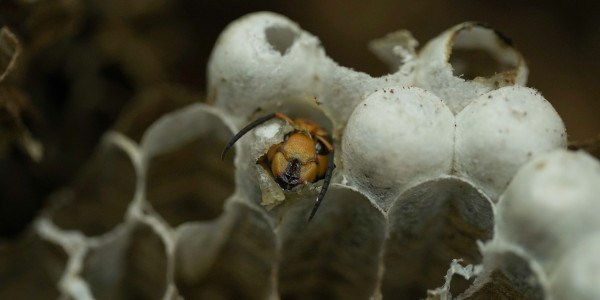
So it felt like there was this impossible mission if you will. And there was a window of time. This was the sort of issue that if it weren’t for these beekeepers or for these scientists, who would care? This window of time is the only shot that they have at trying to stop this from getting established.
I stepped into it and knew I had really great characters going up against all odds. I have a ticking clock for them to try and do something because there were no guarantees – there wasn’t even a guarantee that we’d find a single hornet. There were high stakes, and on top of that, it’s not like they had a lot of support outside of the community.
So here you have this potentially huge issue ecologically, and you’ve got a very small group of scientists and citizen scientists who are expected to do something about it. And they didn’t know anything about the Asian giant hornet; this was brand new for everybody.
It felt like there was a clock from the beginning. And there still is. Basically, three years have to pass without a single sighting for it to be considered eradicated. This is really just the beginning.
You obviously didn’t know what the end result would be. As the task at hand got more and more challenging for your subjects, were you ever afraid you’d be left without a complete story? A complete film?
Michael Paul Stephenson: [laughs] Every day, Luke. I love nonfiction, but it gives you such anxiety because you just never know. I know that I’m really drawn to people and characters, and I get really interested, almost in an anthropological sense, in humanity and individuals. So I knew that was enough for me to hold onto, at least in the beginning.
There was no guarantee and the odds were actually against us that we would find a nest. As time went by and they had false start after false start, there was, very much in my head, a panic trying to figure out how to end this because they may not find a nest. Actually, in the film, when they go to the city park and they’re practicing with the new, greater technology, that was towards the end of our shoot. And the window was getting very slim to where the weather would change and any shot of trying to find this nest would be impossible. So I went to that location with this contingent plan in my head about talking to them about next year. What now? What did that look like? And where do we go next?
So I went to that location with those questions rolling in my head, and it was later that afternoon that they got a call from Phillip, the guy who caught the other hornet. We were up there the next day, and that was the hornet we tracked back to the nest.
The crazy thing on top of all of that – when we were tracking the hornet with them, we marched all over the Earth. Everywhere, I mean hours. And then suddenly, our cameras started interfering with their radio technology to where they would get static. They couldn’t hear anything when our cameras got close. It was a very weird thing. And then it was a problem. Immediately, the WSTA was like, “sorry, we don’t know what’s going on, but you can’t keep filming.” Fortunately, we had backup cameras in our car. We hurried and switched the cameras, and 20 minutes later is when they found the nest.
[drawn out] Wow.
Michael Paul Stephenson: You look back and you’re just like, “oh man.” You’re on the edge of having a movie or not.
You just mentioned the hours and hours of footage where you guys were just looking. We see a lot of that trial and error in the film. A lot of plans falling through, and traps gone untouched. I’m sure in the hands of another director, some of those scenes would’ve been left on the cutting room floor, but why was it important for you to show these almost anticlimactic moments?
Michael Paul Stephenson: That’s the beauty of the process. Whether it’s scientific or whether it’s creative, it’s an iterative process and like Chris says, almost everything he does is just failure. It also gives me a huge amount of respect for public service. To see these guys try, fail, try, fail, be criticized, and still persist, I mean as I’m shooting them, what’s going through my head is, “I probably would’ve quit. Better luck next year, let’s go have lunch.” [laughs]
The failure and the climb and the persistence – that’s everything to me. It’s easy to be on the outside of an issue and say, “ah, they should do this or that.” It takes somebody special to actually get in the ring. They don’t know if it’s going to be successful, but they’re going to try anyway. Seeing them fall. Seeing them get back up. Seeing them fall again. And seeing them continue to essentially fight against something they believe in. That’s everything to me.
I knew going into this story that I was going to find fascinating characters because that’s what I really love. That’s what gives me the motivation to see something through to the end. I knew I’d learn some really interesting things about bees and some really interesting things about hornets. I did not know that I would step back and all of a sudden say, “wow, I never considered people like Chris and Sven, these public servants as heroes.” And they are.
That was, for me, the biggest surprise I think.
It is the scientific process. I don’t know if you’ve seen the movie Chitty Chitty Bang Bang. [laughs] It’s like a cornerstone of my life. That’s why I bring it up. But there’s this song in there with a bunch of scientists that goes “from the ashes of disaster grow the roses of success.” It’s that same exact idea.
Michael Paul Stephenson: [laughs] Yeah. And it is also interesting because it reminds you science is not unlike the creative process. You don’t really know. It’s not as though they had any sort of pretense about what to do and how to do it. You step in and you try. You step in and you do something. And most of the time, it doesn’t work, and hopefully, you step back and figure out what you learned and what the next iteration is. It’s an iterative process.
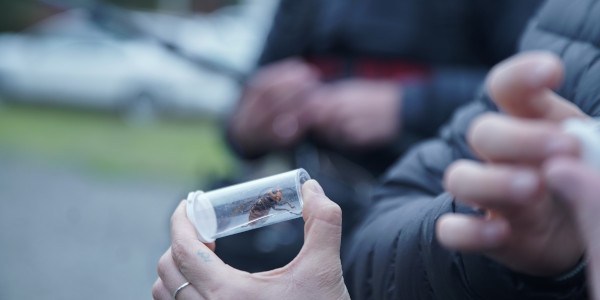
For me, and this sounds wrong, maybe, seeing them failing and seeing them work, I got really happy. [laughs] I don’t mean I was rooting for their demise, but I got excited because it’s a window into the persistence of their character and how they handle this sort of stuff. It’s not even about the nest for me. It’s the journey. It’s seeing these guys actually have to live and work this science in real-time. That’s nice because it’s not like you’re getting guys who step into it who have all this knowledge. You’re getting science in real-time. You’re getting people saying, “I have no idea what I’m doing, but I’m going to try something.” And that’s exciting.
Throughout the film, you show a few people who were attacked by the hornets, and the wounds seriously don’t look much different than bullet holes. Now, the shots in the film tell me you got real up close and personal to these things. What sort of safety precautions stood between you and what you guys describe as apex predators? There must have been something. Please tell me there was something.
Michael Paul Stephenson: [laughs] So, here’s the thing. Me and Rich [Wong], both of us were shooting, and we were in those gigantic hornet suits for the eradication of the nest. That was the only time we wore them. It’s interesting. We were really close when Chris holds one in his hand for the first time. It was on ice so it was a little bit sedated. So, I was very, very close but I wasn’t ever afraid of the hornet. I was afraid of missing the moment.
When Chris holds one in his hand for the first time – prior to that, again, we didn’t even know if we’d ever see a single hornet. We’d heard about them, talked about them, but we never actually saw one in the wild. So when I did get a chance to finally see one, it was like a eureka moment. It felt like a discovery. It felt like Chris had taken me to another planet and shown me a new species. Just the excitement around it – like, “how privileged am I to be staring into the eyes of this hornet?” [laughs] It was exciting.
There’s a moment in the film where the hornet’s on an apple ready to take flight. And I was shooting very close to it, and all of a sudden, it took flight and flew right towards me. That was the only moment I kind of panicked, and now I regret it because I dropped my camera. I could only hold the shot for so long. As we edited it, I was kind of upset that I couldn’t just hold the shot longer. [laughs]
But for the actual eradication, we had to wear the suits. Here’s the thing: because we were with Chris and Sven and the scientists, I’m kind of taking my cue as to how concerned I should be from them because they’re the experts. And they’re so objective because they’re scientists. They’re so calm and so rational. It never felt as though we were in imminent danger.
I mean you say that but I was just as worried for them as I was for you! [laughs]
Michael Paul Stephenson: [laughs] I know. I know. So it’s interesting because I’ve had family and friends say, “man, those guys didn’t wear any suits.” And you look back and go, “Oh, wow.” But I leap before I look all the time. My two biggest fears were missing something really important – That’s what keeps you up constantly because you imagine not being there for the discovery of the nest, and all of your footage being after the fact. It’s not the same. I would’ve been gutted.
And my second biggest fear going into it was having to work with the government in a way that allowed for access. As a filmmaker, you don’t ever consider that’s going to be easy. It’s like, oh boy, this is a really important part of the story. How do I gain trust and access? That was a real worry. And what I was met with was nothing but support. That was a shock.
Not quite the same exciting fear as being stung by a hornet. Here’s the other thing. Here’s the irony of it all. We were shooting the bees at night and I was in a full bee suit. It’s pitch dark and bees, when they swarm around you, make this incredible sound. And all of a sudden, as I was filming, I look my face net and I see this bee crawling up right past my nose. I think, “well, that’s interesting. That’s on the inside of my suit.” And within seconds I was stung.
I left a tiny, little half-of-an-inch hole open right where your collarbones meet in your upper chest. And within a minute, I had six or seven bees inside of my suit stinging me.
At least those bees are one and done, right?
Michael Paul Stephenson: Oh yeah, if you get a hornet in there, you’re in trouble.
You called it a privilege. I don’t know about all of that. [laughs]
***
The rest of this interview discusses SPOILERS for Attack of the Murder Hornets.
***
Now, thinking about the ending, there’s an interesting contrast of ideas that comes up. After spending the whole film discussing the perilous and violent nature of these insects and the possible consequences of their being here, a couple of your subjects express remorse at the idea of exterminating them. You have this excellent moment from Chris talking about the unfair “ethical spheres” we’re applying to this different species. What are your thoughts about that? Is there a place for these hornets?
Michael Paul Stephenson: By the way, what Chris says about not being able to apply the ethics of man onto an alien life form or an invertebrate creature, is one of my favorite things in the whole film. He specifically says, “they’re dangerous hornets. But they’re not murder hornets.” And it’s in this space where everyone is sort of having closure or their moment to share their perspective on the hornet as it has inhabited their world. So you have a beekeeper whose family took a direct hit. And he’s like, “I hate them. Go back to hell.” And then you have the innocence of a family and a child, with the child saying, “I don’t understand. If they didn’t hurt the bees, what would be so bad about them?”

The purity of that statement is great. It’s a perspective that a kid would have and the public would have, and you have a scientist who says let’s be reasonable. They’re dangerous. They’re not murderers. It’s nonsense to try and describe a species like that.
Your question as to whether or not they belong, it’s the last line of the movie: they belong someplace and they’re beautiful. They just don’t belong here.
That is the problem not of the hornet, but of man, the human being. That hornet is here because of us. So the impacts that we continue to have as a species on our landscape, on our environment, this is just more evidence of that. It’s not like you can say it’s the hornet’s fault. It’s evil. It’s murderous. It’s going to destroy everything. No, it’s actually our problem.
In Southeast Asia and Japan and other parts of the world, the hornet belongs there. That’s their environment. That’s the natural ecology of the system over there. Here, it does not.
It’s very rare that I’ll talk to a filmmaker about the ending of their film, but I was not very happy with the final moments of this film with the potato farmer. Not only is that anti-climatic, but do you think that monetization of the situation speaks to a larger American narrative that’s happening?
Michael Paul Stephenson: Absolutely! And specifically to science.
Again, you don’t know if you’re going to ever find a hornet. You don’t know if you’re going to trap one. You don’t know if you’re ever going to find a nest. You can kind of imagine what it will be like to find a nest. But you never once considered that these scientists will have one more unexpected obstacle that means they can’t even keep [their success]. All in the name of someone who has this personal interest in keeping what he thinks is his.
It comes at a moment where you expect victory. But no, that’s not how science goes. It’s constantly being threatened and upended by things that are out of its control. And so, looking back, it’s the same for this hornet. Here these guys are spending all this time, energy, and resources trying to find the hornet, and then there’s one thing that steps on science. You can extrapolate that a million different ways, but it is one of these things where you’re like damn, science is continually the underdog. Even in its success.
I hope that it creates an emotional response. I want people to actually realize that this is a problem.
You show him late in the film because he was gone, farming or whatever. And he came back. It’s like “cool, that’s the guy whose property this is.” And then he turns into f––– Judas.
Michael Paul Stephenson: I know, I know. Here’s another thing on that note of Judas. A huge moment for me with just who Chris is and his character is when he says, “look, when someone can sell them and make a little bit of money, it’s hard for me to fault them without sounding moralizing or grandstanding.” And when he says that, it was the moment I knew he was a real hero. For me, there is no single greater defining characteristic of a hero than self-sacrifice. I can guarantee you 99% of the people out there would not have responded the way that Chris did.
He was also staying true to being a scientist, staying objective. He obviously gets emotional about it, but he realizes there’s a grey area between right and wrong, and he can’t fault him without sounding like he’s being moralizing. That was inspiring for me.
You say it’s him being objective. I’d say he’s being more empathetic.
Michael Paul Stephenson: That’s exactly right. Looking at it from his shoes, it’d be really easy, believe me, for it to turn into a hard good vs. evil discussion. But I think that’s the thing that I’m proud of. The film is true and it’s honest.
I think that too often, it’s really easy to just imagine people as black or white. And with each of these characters, it’s my hope that there’s a level of range. As human beings, we’re not black and white. We have a complex range of moments. One day I’m awful and the next day I’m decent. [laughs]
Film Inquiry thanks Michael Paul Stephenson for his time.
Attack of the Murder Hornets is available to stream now on Discovery+.
Does content like this matter to you?
Become a Member and support film journalism. Unlock access to all of Film Inquiry`s great articles. Join a community of like-minded readers who are passionate about cinema – get access to our private members Network, give back to independent filmmakers, and more.
Join now!

